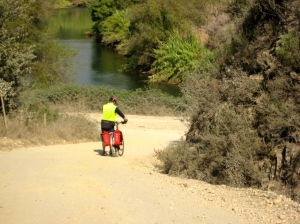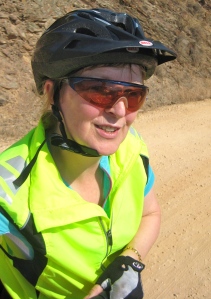I have just ordered myself one of these. They look like a neat way of carrying a decent amount of tools and spares for the bike and as our Thorns have lugs for 3 bottle carriers they will provide a convenient way of moving some weight forward on the bikes and onto the main frame rather than the stays. As the reviews below suggest, buying the bigger version (750ml) is the better idea.

Here are some reviews from the Chain Reaction Cycles site:
Tim from United Kingdom Owner 08 April 2010 20:48
I bought this well over a year ago. It’s a fantastic way to carry your emergency tool kit. Mine takes a spare inner tube (road-700c), a few patches, 3 tyre levers, two CO2 cartridges with the adapter, a mini-tool, spoke key and a couple of extra allan keys plus a bit of rag to stop it all rattling. It is completely watertight and has been out in some pretty bad weather to confirm it. The only down side, and it has nothing to with its design, is that it takes up a bottle cage so on longer rides you’re limited to one bottle…….having said that, I’ve always managed.
Chris from United Kingdom Owner 12 April 2010 07:15
Highly recommended.
Bryn Dodson from Australia Owner 21 April 2011 06:28
I love this item and it is great value. I store heaps in this container. Although if you’re buying I recommend the 750ml – Protein Bar – C02 Cartridge – Spare Tube – Electrolyte powder – Repair Kit
The Don from Ireland Owner 04 September 2011 19:38
Excellent storage solution with tardis like properties. In mine (a large one) I keep…a spare tube, tyre levers, mini tool, some clueless patches and some lightweight rain overtrousers. Bought this to replace a topeak saddle bag which was nothing but hassle (basically fell apart with light usage, bad mounting and would’nt carry half the stuff). This and a bottle cage cost much less and works great for me. Only suggestion would be an opening on both ends so you could push your gear out but its no big deal. Buy it, you’ll be happy.
Ti Yam from Malaysia Owner 13 December 2011 07:07
Good quality for the price. 500ml height is only 12.5cm as oppose to the 14cm advertised. Anyhow is just the right size to fit my Endura Pakajak rain jacket. Will get the bigger one soon.
Gilbert5050 from United Kingdom Owner 06 March 2012 17:00
Great little tool bottle, keeps everything dry, would buy this product again!
Update: January 2013
I am sorry to say I abandoned this item before our last long tour. In use I found it a little frustrating for a number of reasons:
- Because it’s a fixed shape I found it could not hold all of the items I hoped. For example, spare tubes had to be carried somewhere else.
- Small items carried always seemed to find there way to the bottom and so all the contents had to be tipped out to get to the item I wanted.
- I was worried that the threaded lid was not as secure as it might be and so might get lost or allow rainwater to seep into the container.
- As it’s in full view on the bike and easily detached I was worried it might get stolen if left on the bike and it was a footer to remove and carry each time.
So, while it seemed like a good idea, I fear that in use it proved to be a disappointment. I think it would be better suited to a road bike than a tourer. I have reverted to carrying my tools and spares in a canvas roll-up tool bag: much more flexible and serves as a work area when rolled out on the ground next to the bike on the road. It fits nicely and securely into my trusty Carradice Long-flap Saddlebag
via Review Pro Storage Bottle | Chain Reaction Cycles Reviews.






